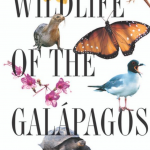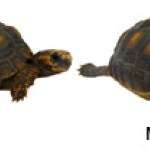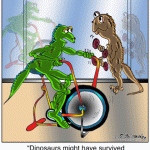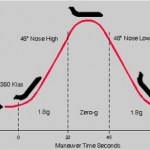Reptiles
Wildlife of the Galápagos: Second Edition (Princeton Pocket Guides), by Julian Fitter, Daniel Fitter, and David Hosking is both a field guide and a travel guide, focusing on the Galapagos Islands. It includes basic information about each island and each town or tourist destination, and a comprehensive guide to how to visit, what to bring and not bring, and otherwise plan your trip to these amazing evolution-drenched islands.
The wildlife that is covered includes birds, other land vertebrates including the famous tortoises and lizards, offshore mammals, fish, insects, and plants. There is…
I've got a new piece over at the Scientific American Guest Blog:
On Friday, March 11, Japan was rocked by an earthquake. People were displaced, a nuclear reactor was in trouble, and the world watched as a tsunami flooded Japan, threatened the islands of the Pacific, and ultimately hit the western coasts of North and South America. Chris Rowan pointed out that "Very little of the devastation resulting from this earthquake was from the initial shaking. This is partly because of Japan's stringent building codes. But mainly because any damage from the seismic waves that sent skyscrapers in Tokyo…
Have you ever been at a party with lots of people chatting away, when for some unexplainable reason you felt compelled to turn and look at the front door of your friend's house...and just as you were looking, someone was just coming in from outside and closing the door? You couldn't have heard the door open since there was so much noise already inside - more likely you noticed that other people were looking at the front door. All of this probably happened without any explicit intention or awareness. If several others are all directing their attention at a specific point in space, there might…
Have you ever been walking through the forest and thought to yourself, "Damn, its loud here...it's really, really hard to hear anything anybody else is saying"? Well, maybe that's what prompted Terry J. Ord and Judy A. Stamps, respectively from Harvard and UC Davis to investigate lizard exercise routines.
You ask: What do lizard calisthenics and communication have in common? Patience, grasshopper.
Dinosaurs also might have survived if they weren't eaten by giant snakes.
A noisy environment makes it particularly challenging for animals to detect communication signals from far away. In this…
Predator-prey interactions are often viewed as evolutionary arms races; while predators improve their hunting behaviors and their ability to sneak up on their prey, the prey improve upon their abilities to detect and escape from their predators. The problem, of course, is that there is a trade-off between maintaining vigilance - the attention necessary to be consistently aware of others in the environment takes quite a bit of physical and mental energy - and doing all the other things that an animal must do, such as finding its own food. As a result of this trade-off, many social species,…
She: "What are you writing about?"
Me: "Cognition in cold-blooded animals."
She: "Hot."
Most people who study cognition focus on mammals or birds. But I hope I've convinced you that other animals are important to investigate as well. One research group at the University of Vienna likes cold-blooded critters. Turtles and lizards and such. They argue:
Reptiles, birds and mammals have all evolved from a common amniotic ancestor, and as such they are likely to share both behavioural and morphological traits. However, this common ancestor lived around 280 million years ago and so it is equally…
This video has been winding its way through the interwebs. It's pretty neat, but is it truly a case of tortoise altruism? Who knows. We don't know anything about those specific turtles or that specific situation. We don't know if they're kin, we don't know if they're trained, if they're pets or wild, we don't know what happened before the camera was turned on, or after it was turned off.
Even still, it's pretty cool.
Close up of one of the Pipe Creek Sinkhole coprolites showing structures interpreted as hair (A) and a close-up of a mold in the coprolite thought to have been made by a hair (B). From Farlow et al, 2010.
Time and again I have stressed that every fossil bone tells a story, and, in a different way, so do coprolites. They are small snapshots of a moment in the life of an organism, often preserving bits of their meals, and while they may not get top billing in museum halls, they are among the most pungent reminders that weird and wonderful organisms really did live during the remote past. As…
A Cuban crocodile (Crocodylus rhombifer), photographed at the National Zoo in Washington, D.C.
Outside of the trash-grubbing black bears I occasionally come across when driving to hikes in northern New Jersey, I never encounter large predators near my home. The imposing carnivores which once roamed the "garden state" were extirpated long ago. This is a very unusual thing. For the majority of the past six million years or so hominins have lived alongside, and have regularly been hunted by, an array of large carnivorous animals, but humans have not been entirely helpless. Rather than a one-…
This past weekend, I was searching around the interwebz looking for something interesting to write about for Monday Pets. Lately, Monday Pets has been somewhat cat- and dog-heavy, so I was looking for something a bit different. I asked on twitter if there were any requests or recommendations. Friend of the blog Dave Munger responded: "What about snakes?"
What about snakes indeed? There are many parallels between myself and Indiana Jones, but one big one is that we both hate snakes. Another similarity is whenever I travel by plane, I leave a series of red dashes to mark my path. We both look…
I know Darren posted about this last year, but it is just too cool not to share again:
For more on the fruit-eating habits of crocodylians, see Darren's post on the subject here.
Figure 1: Reggie the Alligator, in 2007. (source)
Reggie is getting a girlfriend.
Reggie the Alligator has quite a long history. He was illegally raised in captivity near Long Beach, CA by two men (who were later arrested) who were involved in the illegal trade of exotic animals, but then was released into a lake in August 2005.
According to wikipedia:
City officials immediately set efforts in motion to apprehend him. The entire 53-acre lake was cordoned off and several professional "gator wranglers" were hired. But despite a nearly three month-long effort, Reggie managed to elude capture…
An eastern painted turtle (Chrysemys picta), photographed in suburban New Jersey.
An eastern painted turtle (Chrysemys picta), photographed in suburban New Jersey.
An eastern painted turtle (Chrysemys picta), photographed in suburban New Jersey.
The skull of Mosasaurus maximus, photographed at the New Jersey State Museum.
The Brazilian pygmy gecko is mind-bogglingly small. As this clip from the recent BBC documentary Life illustrates, it is so minuscule that it is effectively watertight and can rest effortlessly on the surface of the water. It still amazes me that vertebrates can be that tiny.
LIFE will air starting Sunday night on the Discovery Channel (though, as it is narrated by Oprah in the US, I suggest you pick up the David Attenborough-narrated version on DVD instead).
tags: Life, Discovery Channel, Reptiles and Amphibians, Komodo Dragons Hunt Buffalo, animals, mammals, birds, BBC, television, streaming video
Gail Weiswasser at the Discovery channel emailed a few days ago to tell me about the upcoming March 21 premiere on the Discovery Channel of BBC's LIFE, the 11-part follow up to PLANET EARTH (the most successful natural history documentary of all time). While PLANET EARTH told the story of the natural world through the framework of our planet's ecosystems and regions, LIFE takes us on a more intimate journey, introducing different animal and plant…
Take a whiff of mustard or wasabi and you'll be hit with a familiar burning sensation. That's the result of chemicals in these pungent foods hitting a protein called TRPA1, a molecular alarm that warns us about irritating substances. The same protein does a similar job in other animals, but rattlesnakes and vipers have put their version of TRPA1 to a more impressive and murderous purpose. They use it to sense the body heat of their prey.
Pit vipers are famed for their ability to detect the infrared radiation given off by warm-blooded prey, and none more so than the western diamondback…
Not Exactly Pocket Science is a set of shorter write-ups on new stories with links to more detailed takes by the world's best journalists and bloggers. It is meant to complement the usual fare of detailed pieces that are typical for this blog.
Cold-proof tongue allows early chameleon to catch early insect
Chameleons are some of the most versatile of lizards. They live in baking deserts and freezing mountaintops and part of their success hinges on a weapon that works just as well in the warmth as in the cold - its tongue. Relying on stored elastic power for its ballistic strike, the…





